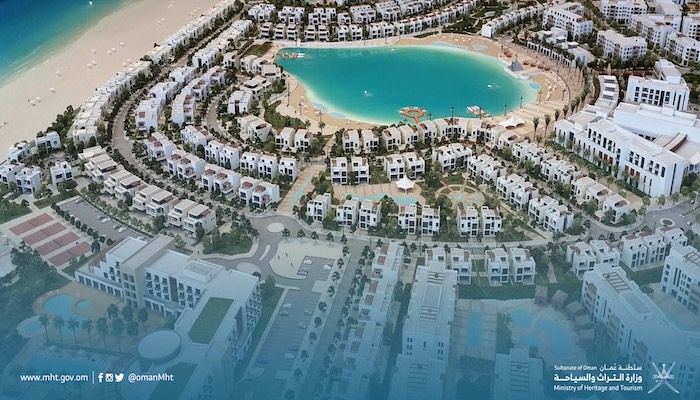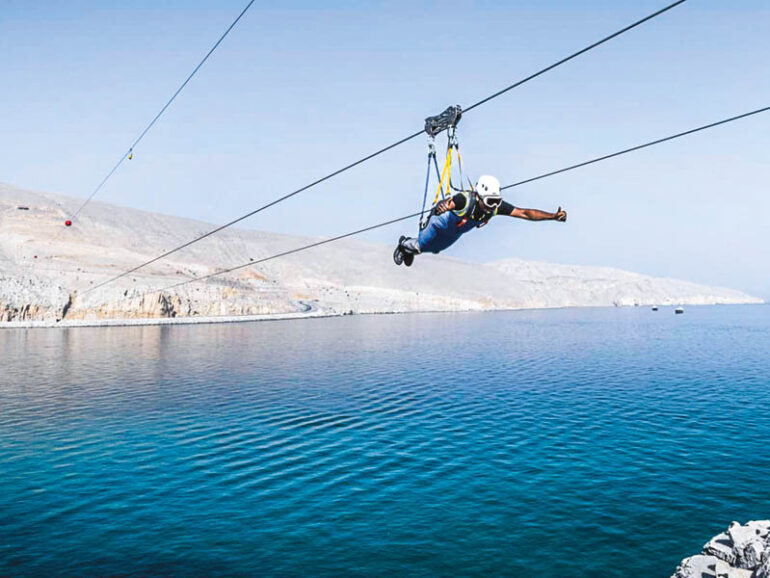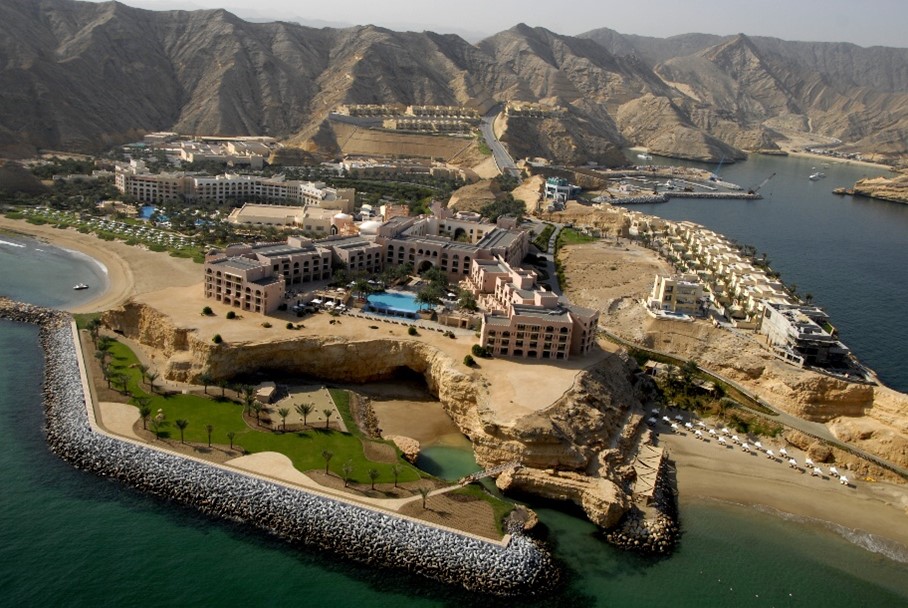
Al Nakheel Integrated Tourism Complex. PHOTO CREDIT: Ministry of Heritage and Tourism
Tourism is a lifesaver for Oman. In its bid to break free from its dependence on oil, the Sultanate has targeted the sector as one of the keys to its economic diversification strategy.
Its goal is to grow its visitor numbers to 11 million by 2040. And, despite the plunge triggered by the COVID-19 pandemic in 2020, the goal seems well within its reach.
Just two years later, tourism soared by 47.3%. It brought $4.9 billion in revenue, a remarkable addition to the US $18.71 billion brought in by oil.
In a report released on May 10, 2024, the World Travel & Tourism Council (WTTC) said it expects tourism to surpass previous records. “Oman’s Travel & Tourism sector is on the cusp of an historic revival in 2024,” said WTTC President and CEO Julia Simpson. “The Oman Government is a strong supporter of Travel & Tourism and is aiming to achieve unprecedented economic growth and job creation.”
In the medium term, the number of visitors is expected to grow 7.4% annually, driven by continuous demand for leisure and business tourism and supported by economic recovery and rising oil prices. BMI Research, a subsidiary of Fitch Ratings, expects a 20.8% increase this year, compared to last year.
Hotel companies have been anticipating a resurgence and have invested up to US$361 million in their facilities over the last two years.
Oman is blessed with diverse tourism assets such as majestic mountains, stunning beaches, and golden deserts. The Ministry of Heritage and Tourism plans to take advantage of these by developing suitable tourism products for these terrains in the next two years.
One product is adventure tourism. Up to 43 short and long-term projects are in the works, some to be implemented by the private sector. These include developing mountain trails in the Green Mountain, Jebel Shams and Wadi Bani Awf, and erecting zip lines in mountainous areas.

Musandam zipline. PHOTO CREDIT: Muscat Daily
Last year, Oman Adventures, an adventure sports destinations promoted by the ministry, launched the Musandam Zipline, the world’s longest zipline over water. Riders start at Jebel Fit and glide over Musandam’s mountains and sea at speeds of over 80kmh to the Atana Khasab Hotel 1.8 km away.
Another product is to make Oman a distinctive destination for cruise ships and yachts. Towards that end, the ministry is currently investing in 3,165 square kilometres of coastal land and in areas near ports rich in unique natural resources.
The ministry also aims to promote Oman as a destination for other events such as weddings, conferences and incentive trips. This would contribute towards enhancing direct income for hotel establishments, small and medium-sized enterprises, travel and tourism companies.
Integrated Tourism Complexes (ITC) are another addition. They provide a wide range of services and facilities in one place. Visitors can enjoy accommodation and entertainment experiences without having to step outside the resort boundaries. An attractive feature is that foreigners can own projects within these resorts, thanks to changes in Oman’s Tourism Law.
ITCs, comprising hotels, hotel rooms, hotel apartments and villas, residential units, as well as golf courses, marinas, restaurants, cafes and retail outlets are in various governorates across Oman. Among the most notable are projects like Muscat Bay, The Wave, Barr Al Jassah, and Al Seifa Mountain in the Muscat Governorate, and Hawana Salalah Resort in the Dhofar Governorate.
ITCs create both direct and indirect employment opportunities, in addition to generating direct economic returns to the GDP and enhancing supply chains in the tourism sector. The total investment is estimated at around US$11 billion in ongoing projects and US$8 billion in licensed projects in the pre-execution stage.

Barr al Jassah. PHOTO CREDIT: Ministry of Heritage and Tourism
The Tourism Law issued in October is a significant step towards the development and regulation of the tourism sector, keeping pace with regional and global changes and characterised by flexibility in tourism activity procedures.
It grants the Ministry of Heritage and Tourism the authority to manage some of the state’s private properties, including the investment and operation of tourist sites, areas and lands with tourist use.
It also grants other powers related to improving the quality of hotel facilities, thereby enhancing the level of services provided to visitors and enriching their tourism experience. This law, a leap in the development of the tourism sector, strengthens the government’s ability to regulate the sector more effectively and contributes to enhancing investment in tourism and reinforcing its role as an engine for economic development in the country.
By V. Dharmalingam
Media Representative, Ministry of Information, Oman












